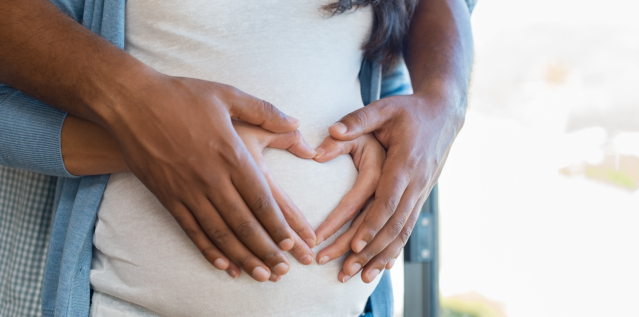Optional Caption
Perimenopause and polycystic ovarian syndrome (PCOS) are hormonal conditions that can affect women at different stages of their reproductive cycle.1, 2, 3
While perimenopause is the first phase of menopause, when estrogen levels rise and fall unevenly,1 PCOS is a hormonal imbalance that can occur in any woman at any time during puberty and menopause.3 In fact, between 2.2% – 26.7% of people in this age group have PCOS.4 On top of that, people with PCOS reach menopause later than those who don’t have PCOS.5
Perimenopause and PCOS symptoms can be similar. When women experience PCOS symptoms in their 40s or 50s, at the same time as perimenopause, it may be difficult to tell the two apart, as they will experience symptoms of both conditions at the same time.5
• Changes in sex drive
• Hot flashes
• Night sweats
• Pain during intercourse
• Urinary incontinence
• Vaginal dryness
• Vaginal and urinary infections
• Acne and skin problems
• Headaches
• Pelvic pain
• Irregular or missed periods
• Heavy bleeding
• Infertility
• Mood changes
• Trouble sleeping
• Thinning hair
• Weight gain
• Hair growth on the face or chest

Women with PCOS may have difficulty falling pregnant as their menstrual cycle is interrupted.4 PCOS also increases the risk of pregnancy complications, such as premature birth, miscarriage, and gestational diabetes.4
Research shows up to 40% of female infertility in South Africa is caused by PCOS.6 And unfortunately, many don’t know they have PCOS until they struggle to fall pregnant.6
Can start at different ages, from mid-30s to mid-50s.1
Can fall pregnant.1
Affects the body and the mind.1
Ends when menopause starts.1
Can start with the first period, or later, in response to weight gain.3
Hormonal imbalance makes it difficult to fall pregnant.3
Affects hormone levels, the ovaries and ovulation.4
Symptoms can continue in menopause.4
Doctors don’t know the exact cause, but research proves it could be caused by genetics, insulin resistance and inflammation.4
Your doctor will do blood tests and a pelvic examination4 and may diagnose PCOS if at least two of the following symptoms are present.3, 4
Women with PCOS can also experience the following complications.3, 4
The following lifestyle changes can help manage PCOS and perimenopause symptoms.5
Almost 80% of people with PCOS are overweight or obese, which puts them at risk of heart attack and insulin resistance, which can lead to type 2 diabetes. A balanced diet and reduction of unhealthy carbs can make a big difference. In fact, losing five to 10% of body weight can help regulate periods and improve PCOS symptoms.
Between the hot flashes and night sweats, it can be difficult to get quality sleep. Follow a healthy and regular bedtime routine to help sleep faster and longer.
While most of the symptoms can be managed with lifestyle changes, if your symptoms become severe, talk to your doctor about treatment that can make a difference.